|
|
|
I consider myself a purger. As an organizer, it's in my blood. Every couple of months I make a run to the thrift store to drop off donations. As such, I did not expect to have much to do in the way of downsizing when we decided to move homes recently. To my surprise, the opposite has been true. To my delight, I have greatly enjoyed the process. I know that for some people (indeed many people) downsizing is intimidating and even painful, but I want you to know that is doesn't have to be. Sure, it takes effort, but it's an effort that pays dividends in emotional and psychological benefits. Why Downsizing Can and Should Be a DelightI have found that every item that passes through my door bound for some location other than my new home leaves me feeling a little lighter. Not only is it one less thing I have to move (and at this point in the process that prospect has real value to me), it's something I no longer have responsibility for. Have you thought about your stuff in those terms before? Every item we own is an item we are responsible for. It's an item we have to clean and maintain and house. It's also an item we are one day going to leave to others to deal with. Knowing that I have fewer things for which I am accountable leaves me with a sense of relief. Another thing I love about downsizing is the opportunities it opens up for creating the home I want. The less junk I have, the more space there is for the things I truly love and value. The easier it is to find things. The confining, crowding effects of clutter are replaced with a sense of tranquility and calm. Does It BelongMoving provides an ideal opportunity to downsize. One way or another, whether you're moving yourself or paying someone to do it for you, there will come a point in the process where you will handle every item you own. It could be going into a box or onto a truck, or it might be coming out of the box or off of the truck. If you're doing it all yourself, then you get the bonus of two opportunities to consider each item's fate. Such is the case with our move. I highly recommend mindful packing/unpacking. Before putting forth the effort to pack an item and transport it to a new location, ask yourself where it fits in your new home and the lifestyle you hope to enjoy there. If an item passes this test only to cause you stress on the other end as to where it belongs, ask yourself if it does belong. Too often we get caught up in the value of an item, either emotionally, financially, or practically. Instead, try thinking about how an item fits into your space and your lifestyle. Things can have intrinsic value without having value to you personally. It's okay to let go of such things. In fact, it's advisable. The Downsizing ProcessOur downsizing process has been multifaceted. When I first started setting things aside to get rid of, I pictured myself having a sale. The time of year and the effort involved (not to mention the time) have caused me to rethink that plan. With one exception, we have given away (or thrown away) every item we have parted with. Here's how the process has unfolded:
Downsizing Is For EveryoneYou don't have to be moving to enjoy the benefits of downsizing. You just need a little motivation, a little energy, and a little time. If you've been meaning to downsize, let this be the impetus to get you moving in that direction. I promise you'll be glad you made the effort. Letting go feels good! It's liberating to release things that no longer serve a purpose in your life, and it's rewarding to find them a good home.
One of the things that has surprised me the most about this process is how many items we have held onto that were in some way damaged or unserviceable. Such things are easy to get rid of and are rarely, if ever, missed. Try starting with these items to build your motivation and go from there. You can do it!
10 Comments
No matter the circumstances of your relocation, moving is always disruptive. My husband and I are currently undergoing our 17th move. We did not anticipate moving when this year began, but as we all know, 2020 has been full of surprises. Fortunately for us, this particular surprise has been a happy one, but even blessed events in our lives are often fraught with anxiety. Such is typically the case with moving. While the chaos and turmoil of moving cannot be avoided, they can be limited. Following are tactics and practices that are working well for us, and which I hope will work well for you, if and when you find yourself relocating.
My husband is an expert planner. He's better than anyone I've ever worked with at "wargaming" situations. He has taught me a great deal about the importance of planning and also the process. Given the number of times we have moved, if there is one thing I can personally attest to, it is that effective planning is an essential part of a successful move. For this particular move, we are packing and moving ourselves the 3.5 miles from our old home to our new home. We are doing so in phases over the course of a month. We have planned out what we will move and when in order to accommodate the various contractors we have hired to redo flooring, repaint walls, and complete other odd jobs at both homes. We have carefully thought through the best order in which to do things so that we can get the most done under the circumstances. Because floors and walls are being redone at the new house, the first phase of our efforts has focused on the unfinished or non-living areas of the new house such as the workshop, storage space, and garage. In addition to creating an overall plan for how to conduct our move, we regularly discuss the plan for the upcoming week as well as the day ahead. We set goals for what we hope to accomplish and adapt accordingly. At times it can feel redundant to discuss the same topics over and over, but doing so keeps us both on the same page, and that is so critical for both our mental health and our relationship. There is so much to plan when you are moving:
Thinking (and rethinking) through all of these things will make your move seem less overwhelming. If you know what needs to be done and have a plan for accomplishing each task, you can feel in control, and crossing items off your list helps you see that things really are progressing despite the sense of chaos that always accompanies a move.
Speaking of chaos, moving, by its very nature, is chaotic. You simply cannot disassemble your belongs (and in the process your lifestyle and schedule) and reassemble it all in a new location without a significant amount of disorder, confusion, and mess. My advice is to embrace the chaos. If you can enter the process with this reality firmly fixed in your mind, it is less likely to throw you into a tailspin. From my own experience I can tell you that this notion is easier for some personality types to embrace than others, but it is beneficial to all. Just accept it. Your life is going to be in turmoil for a time. The turmoil will end. You will return to a place of peace and comfort in due time. The more you plan and prepare, the sooner the chaos will subside and normalcy will return. Focus on what you can control and simply say to the rest: "Hello, Chaos. I've been expecting you. Make yourself at home, and don't mind me. I intend to work around you."
The other day my husband lamented, "How long will it be before there is a room in our home that is not a cluttered mess?" I took his comment to heart and spent an hour rearranging the chaos as a gift to him (not to mention myself). I realized that I had it within my power to contain the chaos. Instead of leaving boxes and other items strewn about everywhere, I decided to consolidate the packed boxes, the empty boxes, and the packing material in one central room (in this case the living room) which is already 90% packed, leaving the rest of the rooms on the main floor clutter free. The room I selected is a room that we don't spend much time in, so despite the fact that you must traverse through it upon entering our home in order to get to the other, more frequented spaces, it disrupts our lifestyle very little to have everything stacked (neatly) in that room. After doing so myself, I highly recommend creating a clutter-free zone in your home during a move. Let there be a space that feels comfortable and "normal" where the family can gather in limited stress surroundings. The best candidate is the room (or combination of rooms) where you congregate the most.
It is tempting to create lengthy to do lists, but doing so often leads to frustration and discouragement, both of which undermine productivity and well being.
For an in depth look at how to create a manageable To Do List that you will actually complete, check out this post by fellow professional organizer and blogger Seana Turner. Keep in mind that things frequently take longer than anticipated, and interruptions are unavoidable. Yesterday, my goal was to finish painting the new garage so that we can begin setting up shelving and organizing the space. I had two unexpected visitors (a long time friend and new neighbor, and our real estate agent who is also a good friend). While I enjoyed visiting with both of them and showing them the progress we have made thus far, these disruptions sapped valuable time from the task at hand and put me behind schedule. In the end, I was able to get the job done - with a whole lot of help from my daughter (Thank you, Jessica!). Had I not had the help, I would not have finished, and I would have been faced with a dilemma - whether to dwell on what I did not accomplish or rejoice in what I was able to get done. Some tasks are time sensitive and must be accomplished by a certain time. Other tasks have a window in which they can successfully be finished. Many tasks are free floating, meaning there is no deadline associated with their completion. Prioritizing tasks accordingly can help ensure that the time sensitive tasks are finished first. Beyond that, it helps to be a little bit flexible and forgiving of yourself when you fall short of your own expectations. Work hard. Work efficiently. Celebrate your achievements, and reassess your plans each day to reflect the reality of what you have been able to accomplish and what still needs to be done.
I have known many, many people who have lived in a home for more than a year and have still not finished unpacking and setting up house. The reason is that they have not taken the time to move in properly. They have continued to live life at the same accelerated pace which greatly limits the time they have to do the work associated with moving. Moving is time consuming. It's a huge undertaking. In order to complete a move in a timely manner, it is necessary to set some other things on the back burner for a little while. Limiting your outside responsibilities and appointments in order to finish unpacking your home takes far less time than unpacking your home while continuing to live a hectic life. One reason it takes so long to unpack when you're only doing a little here and there as you have time is that most of us are exhausted at the end of the day, and unpacking takes both mental effort and physical energy. For us the best method has consistently been to simplify our schedules and focus on the move. By doing so, we have consistently been able to be fully unpacked and settled within a couple of weeks of completing the transition to the new home.
Between the exhaustion and the disarray associated with moving, meal planning can be a real challenge. Waiting to "plan" dinner until the last minute when everyone is tired and hungry often ends with fast food. A little planning will allow you to maintain a healthy diet and prepare quick, easy meals. Try keeping fresh fruits and vegetables on hand to snack on, and stock up on healthy freezer meals and other quick fixes your family enjoys.
It is tempting to stuff things into closets and corners to deal with later when you are tired and overwhelmed, but moving is your opportunity to start with a clean slate. Take advantage of this enviable circumstance to sort through everything and toss those things that no longer serve a meaningful purpose in your life. Take the time to set up organizing systems in every room of your home. Don't just move those boxes of old papers in the basement; sort through them. Work until the job is done before declaring victory.
For tons more information on planning for your move, check out my eBook: Moving Made Easy: A Step-by-Step Guide to a Successful Move. In addition to how-to information, you'll find 10 printable checklists to use before, during, and after the move to stay on top of things.
Moving is messy. It generates loads of dust and trash. Taking a few extra minutes to sweep behind a newly moved piece of furniture or wipe down a dusty surface does wonders for one's outlook. I also highly recommend cleaning entire spaces as you empty them. This works best if you are moving in stages as we are, but it can also work if you have movers loading all your stuff onto a truck. While they are busy hauling items out of the house, you can focus on cleaning the spaces they have cleared. It's a great feeling to be able to shut the door on a room and declare it "done".
Try to avoid shuffling things around. This only creates more work. Determine where an item or box needs to go, and put it there the first time if at all possible. The fewer times you have to move the same item, the happier you and your back will be.
Take time to relax each day. Ideally it is best if you can do so at the beginning and the end of each day. Even if it's only for a few minutes, taking a little time off to indulge in something that relaxes you will help you manage your stress and maintain a positive attitude.
My husband likes to paraphrase the words of Prussian General Helmuth Von Moltke (1857 to 1871) by saying, "No plan survives first contact with the enemy." In the civilian world, this adage could be restated to say that no matter how carefully you plan, something unexpected is bound to happen at some point. This does not alleviate the need to plan (see point number one above), but accepting this fact as truth can help you roll with the punches and adapt when unforeseen problems arise.
Keep in mind that the chaos of moving is temporary. The process of moving, while stressful, can also be fun and exciting. It's a chance to reinvent your space and organize your belongings in new and more functional ways. Instead of focusing on the challenges, concentrate on the end result - a lovely new home where you and your family can thrive.
In recent weeks, my husband and I have searched for and selected a new home, and tomorrow we sign for it! Needless to say, we are very excited! It is wonderful to get to this point in the process, but there were plenty of times during our search when I seriously contemplated giving up and staying put. There aren't many houses for sale at the moment in our area, and there are even fewer that met our wants and needs. We'd see a house on the internet that seemed perfect only to be disappointed when we saw it in person. Of course there were contenders, but knowing which house to select was intimidating. It's a big decision! To help us in our decision making process my husband developed a grading system. He's good at that sort of thing, and I'm so glad because it works! Why Move?Before introducing our home grading system, I feel like it would be useful to explain why we began searching for a new home in the first place. We aren't changing jobs or seeking to be closer to family or anything that would force us to move, and technically our current home meets all of our needs, though not perhaps as well as we would like. We purchased our current home while living in the Middle East in preparation for a move back to the United States. My husband spent a few days at the end of a business trip searching for a place before returning to Abu Dhabi where we were living. I never saw the home face to face until after we signed for it, and in all honesty, my first reaction was one of (albeit mild) disappointment. In the intervening 7 1/2 years, we have made numerous upgrades and changes to the home, making it our own, but there are some things about it - the things we like least - that we simply cannot change. It occurred to us that we were not stuck here. If we wanted to move, we could, and so we began our search.
To start with, we made a list of each of the spaces in our current home. Next to each space, we gave our current home a letter grade (A, B+, C-, etc.) depending on how well we feel each particular area of our current home meets our wants and needs. This gave us a baseline with which to compare other homes. After looking at a potential home, we would go over our list and grade the contender independent of our current home or other homes we had seen. The idea was to make an honest assessment of how any given home measured up on its own to our list. Then we compared the contender to our ratings for our current home. This made it easy to see whether the home we were considering was actually an improvement over our current home. Seeing the pluses and minuses for each home displayed next to our current home and one another made comparison simple and helped us rule out homes that appealed to our aesthetic but didn't actually meet our needs. We are (almost) empty nesters. Our youngest son is living with us while finishing up a program at a local community college. Despite the fact that our children are grown, we wanted a place where the whole family could gather comfortably on occasion. We wanted a place for our grandchildren to play, and we needed a place where my husband could record his podcast and we could both work from home. I'm sure there were times when our realtor wanted to strangle us! We turned down many a beautiful home because it just wasn't quite right. We were in a position to be able to do so (since we didn't have to move), and we wanted to be sure that we got it right before we upended our lives. The grading system made a huge difference for us in narrowing down our options, so that after two months and countless houses spanning a 30 mile radius we knew the house we wanted when we saw it. Another benefit of using the grading scale was that it helped us to be unified in our search; by thinking through each space, how it functioned, and how we wanted it to function, we were able to come to a consensus about what we were looking for. Here is a look at our home grading system. You'll notice that there are things about our current home that we truly love, but many things we do not love. I think you will also see how clear it became for us on paper that the new home would meet our needs and desires much more effectively. In the interest of simplicity, I have only included the grades for our current home and the home we are purchasing, but we did use this scale to judge most of the homes we considered (some didn't warrant the effort).
As I discussed this blog post with my husband, he pointed out something that I felt was worth mentioning. Most homes have what he refers to as an "X-factor", a single characteristic or space that you fall in love with which makes it possible for you to overlook other aspects of the home that you are less enamored with. In our current home the X-factor is a space we call Narnia. You can read about why in my last blog post, Why a Little Clutter Can Be Good for the Soul.
In our new home it is the all season room - a room with windows on three sides and a lovely tile floor where I intend to do a lot of sitting and reading and writing. What is the X-factor in your home? What does it allow you to overlook? Unless you're independently wealthy, chances are you cannot afford the perfect house. Compromises must be made. Identifying your wants and needs and carefully rating a potential home as to its ability to meet them will help you choose a home where you can feel content and comfortable. If you're in the market for a new home, I hope you are able to utilize a home rating system to make your decision easier. If you know someone who is shopping for a new home, please share this post with them.
Three of our four grandchildren have been visiting for the past two weeks. They are six months, two and a half, and almost five. Needless to say, it's been lively. When they are here, the house fairly pulses with energy. Now that they are gone, it feels empty and deflated. It also looks a little like a whirlwind came through. As a young mother of four, I often found myself feeling overwhelmed by the constant struggle to maintain order. As a grandmother, I find myself joyfully embracing the chaos. The fact that there are toys strewn about and things out of place on all three floors of the house and in practically every room is a source of amusement and cheer. It serves as a reminder that little people are about curiously engaging with and exploring their environment. I'm glad to be able to provide a stimulating space that sparks their imagination. As an organizer my natural tendency is to get rid of things that no longer serve a purpose in my life, but my husband and I intentionally made one significant exception to this rule. We saved many of our children's toys. We made this decision with our future grandchildren in mind. It meant moving and storing stuff that no one was really using for about ten years, but it was so worth the effort and space. Now that we have grandchildren, the investment is paying off. When the littles come to visit, they have a blast discovering new things to play with. They refer to the bedroom where they sleep and where the toys are kept as their room, and they love it. Every morning when they wake up, they fill their hands with a selection of toys and wander downstairs to greet the day. They are never bored.
When we purchased our home it had a roughly finished space above the garage which could only be accessed by ducking through a small door at the back of our son's walk-in closet. In our minds, it was always destined to be the playroom, so we dubbed it Narnia. Several years ago we remodeled the second floor, turning the closet into a hallway and reading nook and making Narnia a legitimate bedroom. It's certainly non-traditional, but it's also a really fun space.
An interesting side effect of having a playroom full of toys is that I really don't have to childproof my home. The kiddos are so busy playing with the toys, they rarely get sidetracked by things we wouldn't want them to touch. Although occasionally they do stake a claim to a non-toy item, typically using it in some other way than what it was intended for. On this particular visit, it was a candle holder shaped like a bird cage. My oldest granddaughter quickly surmised that it was the perfect spot for a little bird puppet to dwell and carried it about with her wherever she went in the house for the first several days she was here. Before long, she was using it to hold all her favorite toys, no doubt in a vain attempt to keep them out of her brother's reach. For me the lesson in all of this is that sometimes there are legitimate exceptions to the rule. Stuff should serve a purpose in your life. If it doesn't it's clutter, and as such it becomes a burden. If, however, it brings you and others joy, it's worth the space and effort involved in its storage and upkeep. The key is understanding why you're holding onto things and being honest with yourself about the role they play in your life. Are you getting a return on your investment, or is your stuff controlling you? I recognize that not everyone will understand my choice to go against my inner organizer instincts in this instance. I also realize that not everyone will be in a position to save a whole roomful of toys for their future grandchildren. Most people wouldn't even consider doing such a thing. But for us it has worked out wonderfully, and I am glad we lugged the storage containers full of toys around for a number of years and grateful we had the space to store them. Watching my grandchildren play has helped me appreciate that all the world can be filled with wonder and that joy can be found in the simplest things. I have also been reminded that old things can serve interesting and surprising new purposes. Most of all, though, I have come to understand that even those of us who love and crave order can benefit from a little chaos every now and then.
|
Archives
November 2022
Categories
All
|
Proudly powered by Weebly




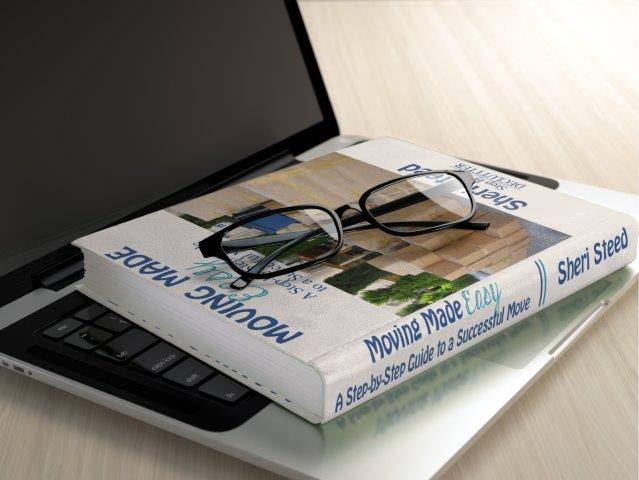

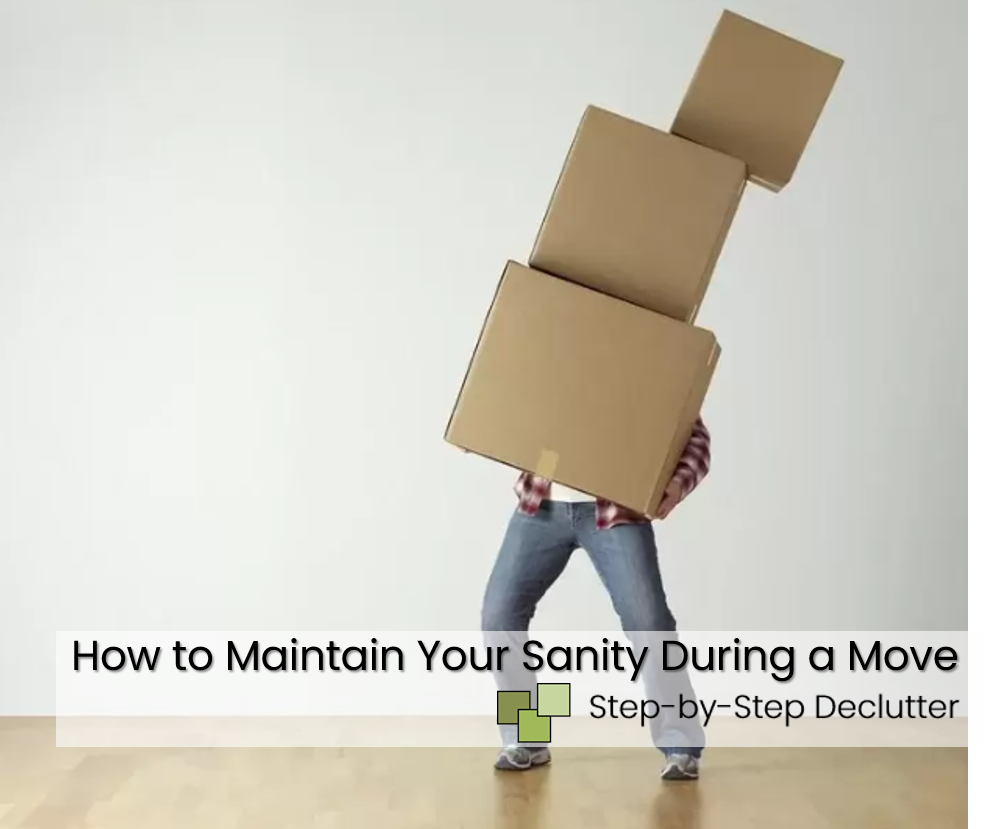

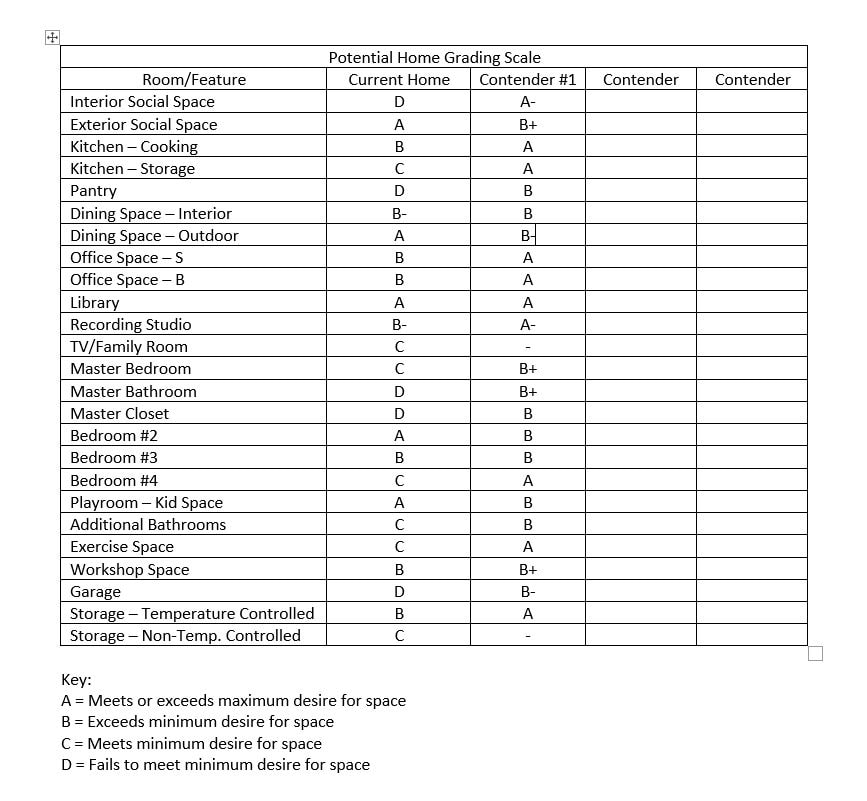
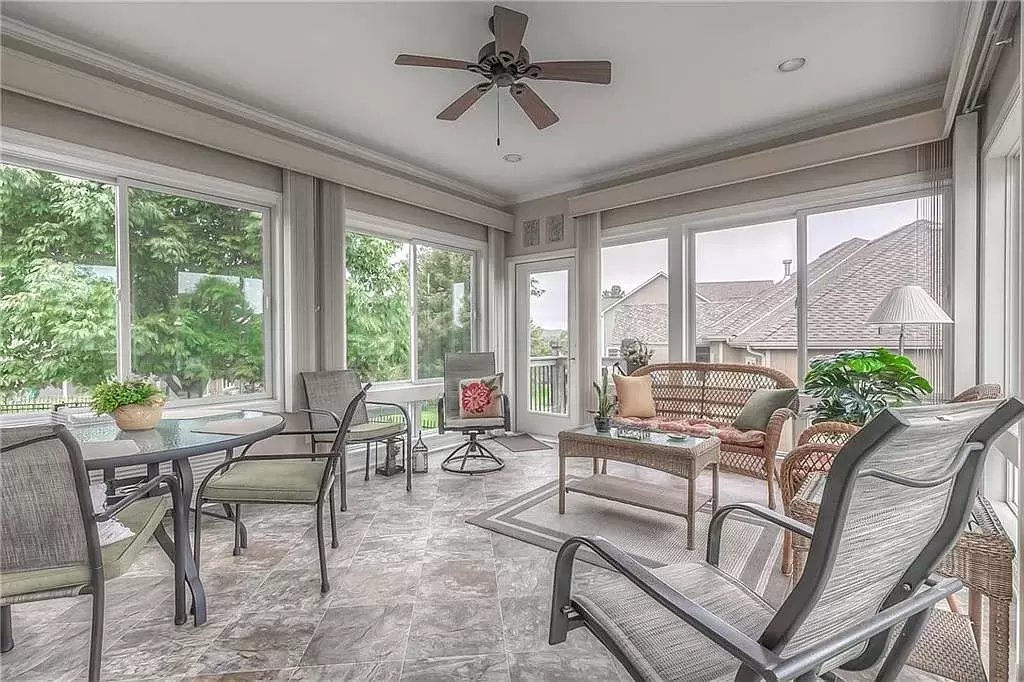


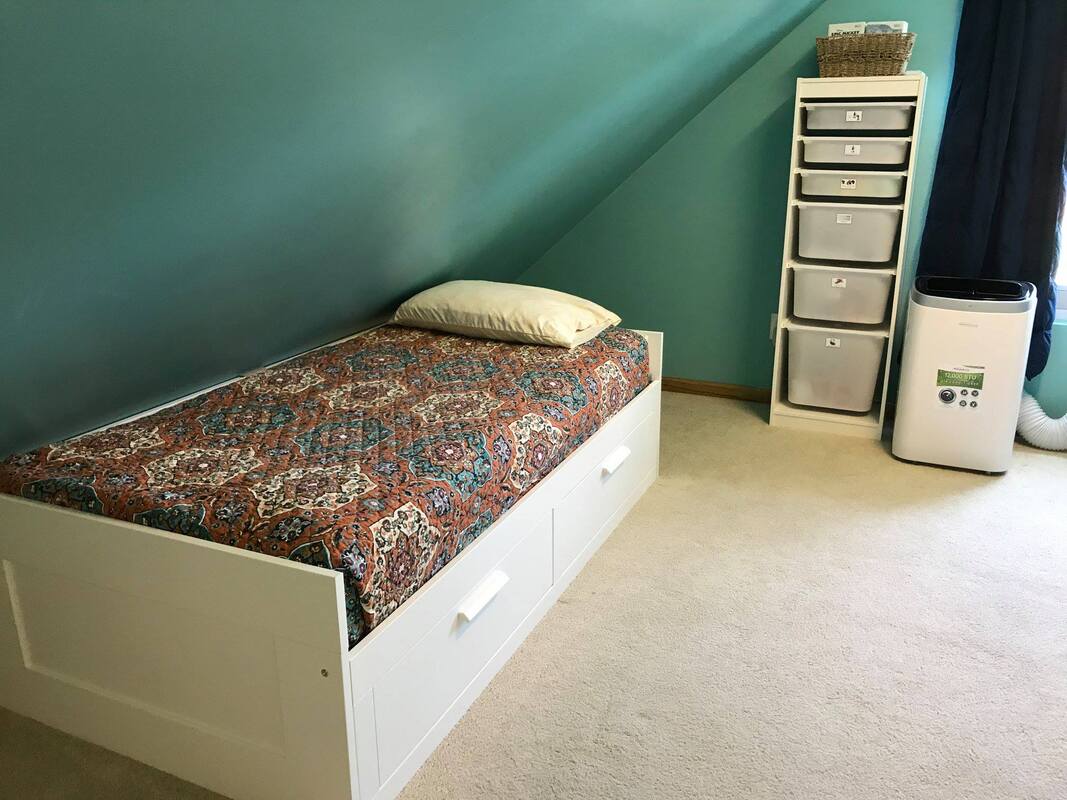
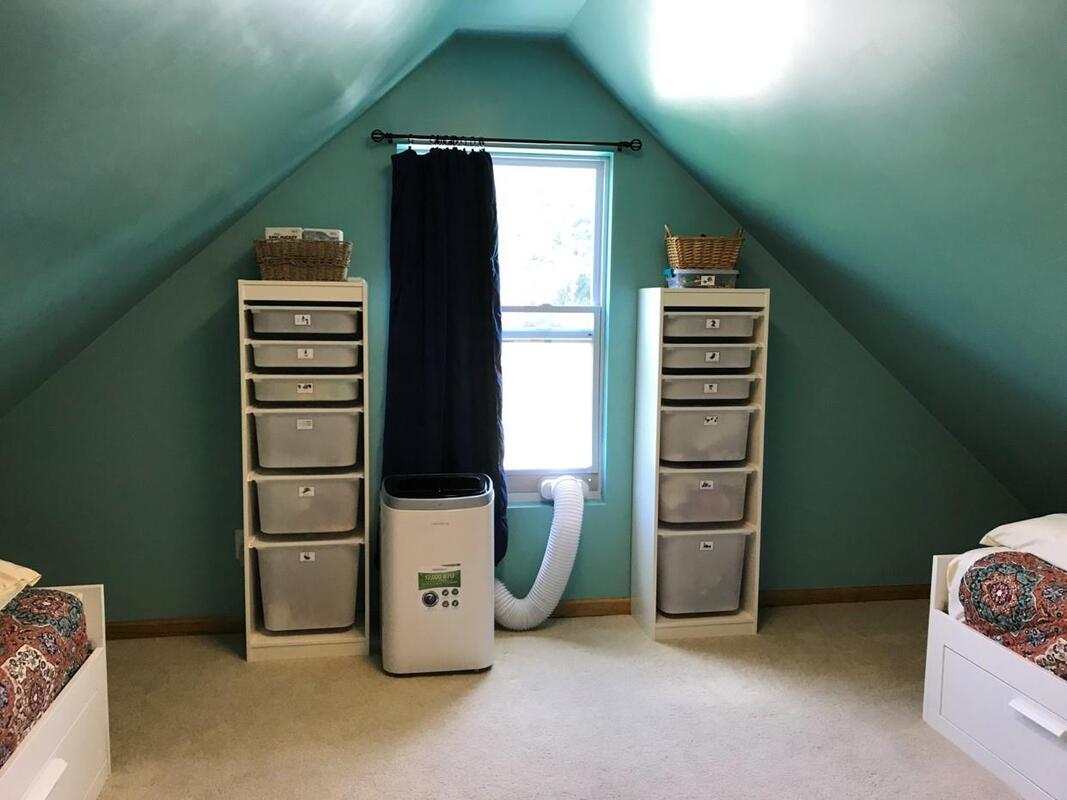
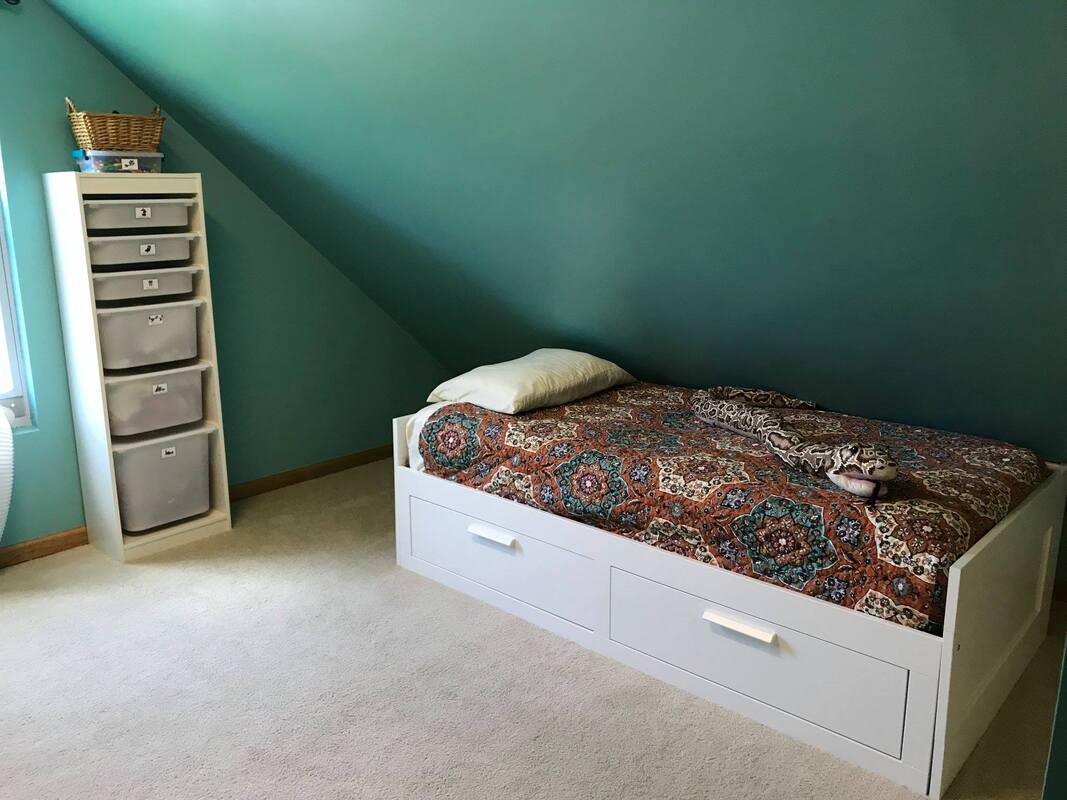
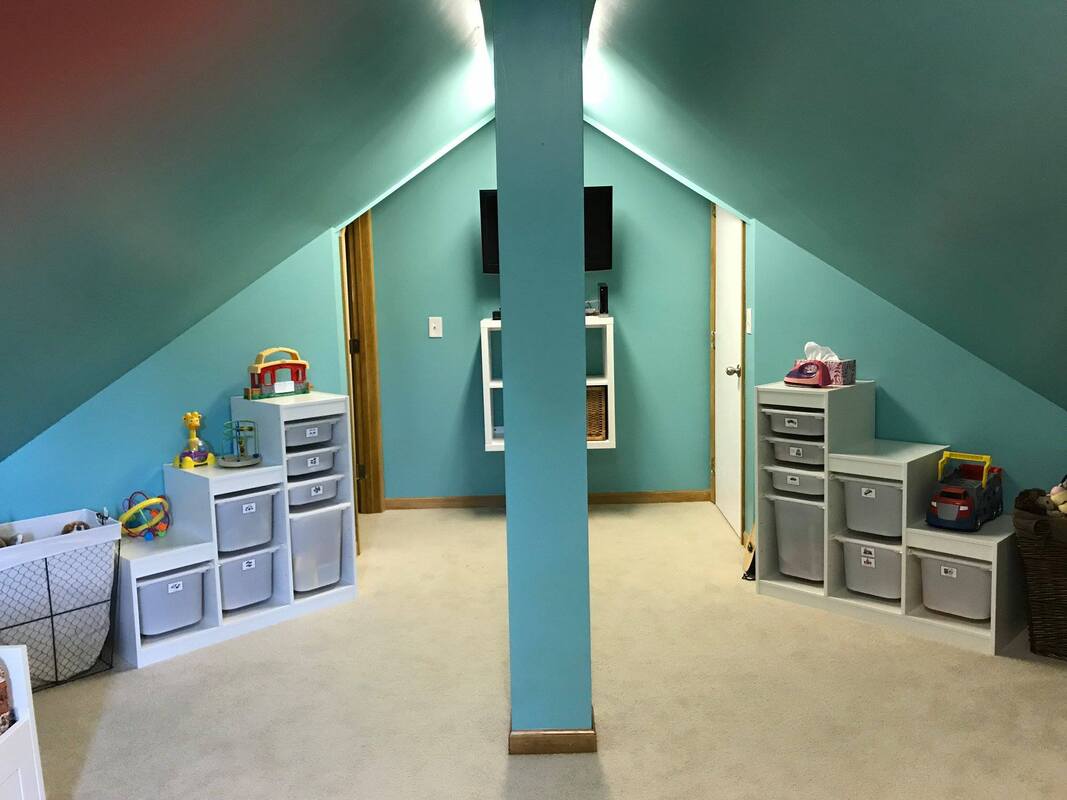
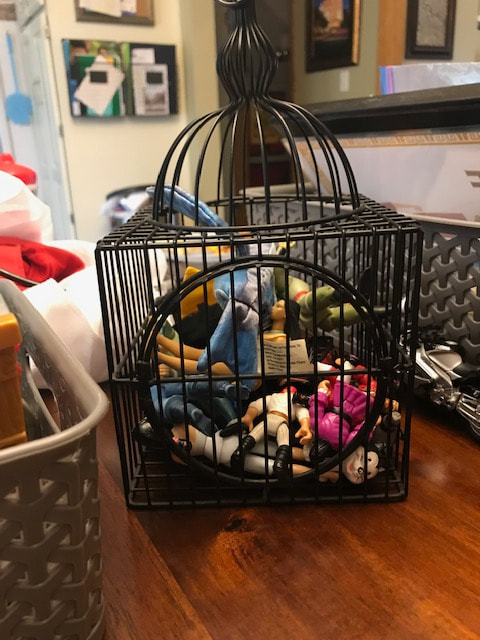
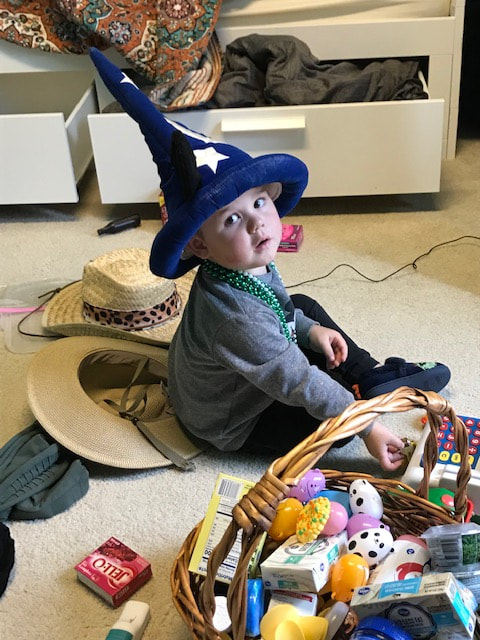

 RSS Feed
RSS Feed